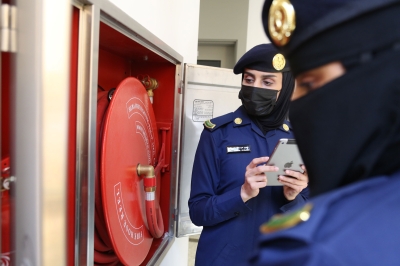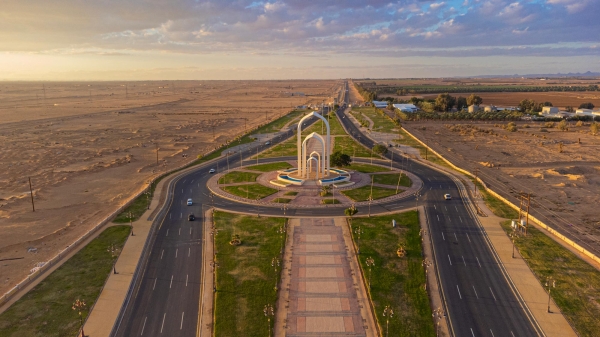
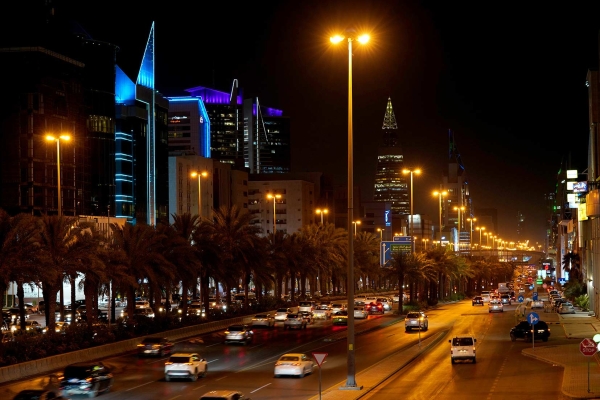
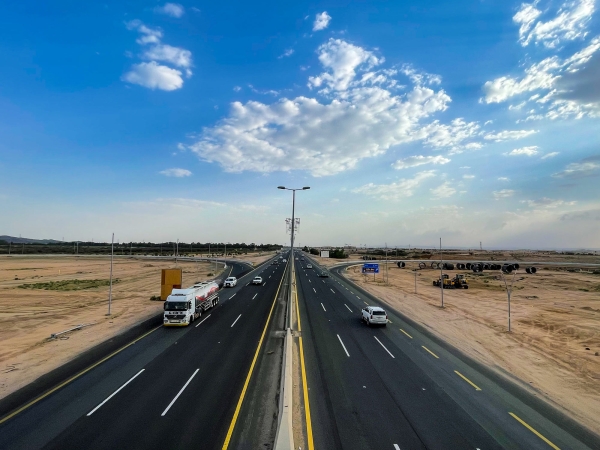
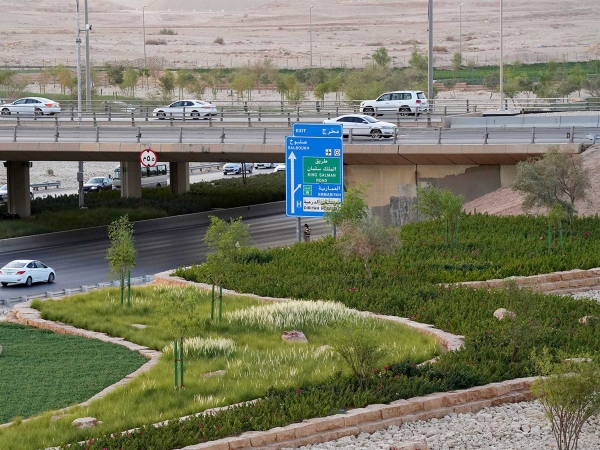
Streets in the Kingdom of Saudi Arabia are named streets where residential or commercial buildings are located. A street is one of the six main components of the national address system in the Kingdom of Saudi Arabia, used to locate addresses within neighborhoods and cities.
Streets are named by the Ministry of Municipalities and Housing. Municipalities and local councils assign a unique number to each house or commercial establishment on a street or alley in an organized manner, ensuring the numbering sequence is consistent. These numbers are placed in prominent locations. It is prohibited for any individual to carry out building-related activities, such as digging or filling, on any public street or square without a written permit from the relevant entity, clearly stating the purpose of the digging and the duration it will last.
Street naming in Saudi Arabia
In 1986, the Ministry of Municipal and Rural Affairs and Housing (now the Ministry of Municipalities and Housing) established local naming and numbering committees under the municipalities. These committees are responsible for selecting street and square names, guided by the "Street Name Dictionary", which was prepared with contributions from writers, historians, and academics. The committees submit proposed names, particularly those of notable national figures, to province governors and mayors for approval. At that time, the ministry directed all municipalities across the Kingdom's provinces to conduct a comprehensive review of street names and replace any inappropriate ones.
The naming of streets varies according to street and square naming committees within the municipalities in the Kingdom. For example, the street and square naming committee affiliated with the Jeddah Governorate Municipality operates according to naming standards based on the classification of streets into three categories: A, B, and C. Names of Category 'A' streets are assigned to streets located between major arterial roads and include the names of companions, prominent scholars, thinkers, and notable public figures. As for Category 'B' streets, their names are assigned to intermediary streets within neighborhoods, which include the names of scholars and thinkers recognized for their academic and intellectual contributions both locally and globally. Additionally, they feature the names of writers, poets, and martyrs who lost their lives while performing their duties across various military sectors.
Names of Category 'C' streets are assigned to intermediary streets and pathways within neighborhoods. These streets include the names of public figures, both locally and globally, who hold social prominence, as well as notable educators, writers, poets, creatives, craftsmen, and significant sites or landmarks.
The names of Riyadh’s roads and streets
In 2021, the Riyadh Province Municipality launched an initiative to enhance the local character in the names of the capital’s roads and streets. The first phase of the initiative targeted seventeen roads across ten neighborhoods in the northern and western parts of Riyadh City. It included the installation of 209 signs, ranging from wall-mounted signs to those placed in median strips and arrow signs, in addition to sixteen overhead signs, all aimed at facilitating residents' navigation and ensuring smooth movement between these roads and nearby ones.
The Riyadh Municipality incorporated a QR code on the signs, providing a brief description of the name. This feature enables residents to access directional information about the street, details about the neighborhood and municipality it belongs to, as well as its location on the city's spatial map. This initiative aligns with the city's digital transformation efforts.
Street greening in Saudi Arabia
Around twenty-one types of native plants suitable for greening gardens, streets, courtyards, squares, and city entrances are planted along streets in the Kingdom. This is an approved list established by the Ministry of Environment, Water, and Agriculture.
Public activities and celebrations on Saudi streets
Streets in the Kingdom host various social, cultural, and entertainment activities, some of which take the form of celebratory and parade-like events. Saudis participate in festive processions to express their joy during public occasions, such as National Day celebrations. During Ramadan, it is common for individuals or groups, sponsored by government entities or charitable organizations, to distribute meals to those fasting at traffic lights, road intersections, and pedestrian crossings. Additionally, there are carnival parades, camel shows, and classic car exhibitions.
Cultural celebration on al-Suwailem Street in Riyadh
Al-Suwailem Street, located in the heart of the capital, Riyadh, holds significant historical value and is fondly remembered by Riyadh's residents for its association with joy, games, and gifts. In 2021, the Ministry of Culture launched an event to celebrate this street, closing it for one day each week over twenty-four weeks, making it exclusively pedestrian-friendly. The street hosted various cultural activities and events aimed at children and families as part of the initiatives of the Quality of Life Program, one of the Saudi Vision 2030 realization programs.
Qabel Street in Jeddah, one of the world-class streets
Qabel Street, located in Historic Jeddah, is one of the prominent streets that contributed to the area's inclusion on the World Heritage List. Since 1940, it has established Jeddah as a city of finance and economy, serving as a testament to the city's transformation and development through its market filled with small shops.
Commercial activity at al-Hab Street Market in Dammam
Al-Hab Street Market has been a center of commerce for over seventy years, making it one of the most famous traditional markets in the Eastern Province (Dammam). The market's name, "al-Hab Street", is believed to have come from a street once known for selling seeds and nuts, or from the production of "hab", a type of pottery, according to some accounts. Others suggest the name comes from the fact that young couples preparing for marriage would frequent the street to buy fabrics, clothes, jewelry, gold, wedding dresses, and traditional cloaks, giving the street its symbolic and current name.
Related quizzes


